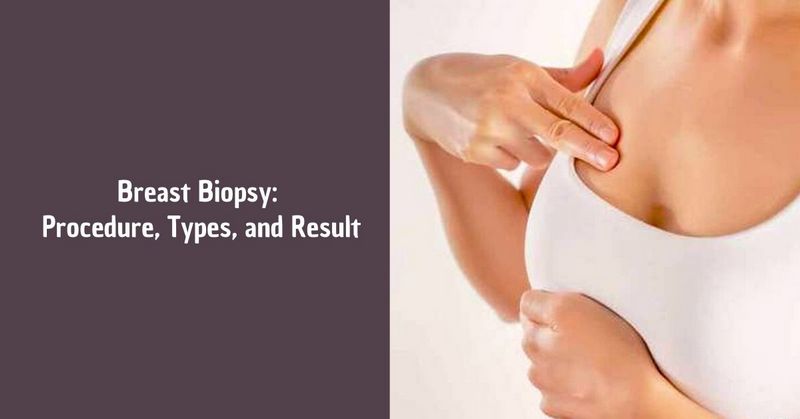Breast Biopsy: Procedure, Types, and Result

A breast biopsy is a diagnostic manipulation to remove a small sample of breast tissue for subsequent histological examination. This technique allows you to confirm or exclude breast disease with high reliability.
Table of Contents
ToggleIndications
- A seal in the mammary gland;
- Suspicious sites determined on a mammogram;
- Suspicious sites detected by ultrasound;
- Visible changes in the nipple area (crusts, sores, peeling);
- Bloody discharge from the chest.
You will probably be very concerned about having a breast biopsy. However, 80% of women find out that they do not have cancer – keep this encouraging fact in mind when going to undergo a biopsy.
Types of a breast biopsy
Plots of breast tissue during a biopsy can be taken in various ways. The choice of how to perform a breast biopsy depends on a number of factors evaluated by a doctor.
I. Aspiration biopsy. Obtaining a piece of breast tissue is carried out using a vacuum device or syringe.
- Fine needle aspiration biopsy. This is the most commonly used type of breast biopsy performed with a very thin needle. If the pathological site is not determined by palpation, a biopsy is performed under the supervision of an ultrasound machine, mammogram or magnetic resonance imaging (MRI). If necessary, several samples of breast tissue can be taken from various sections of the pathological formation (tumor). In this case, it is about a stereotactic breast biopsy;
- Thick needle aspiration biopsy. This is a type of a breast biopsy performed with a large diameter needle equipped with a cutting mechanism. This technique allows you to get larger sections of breast tissue, which provides higher accuracy of the histological diagnosis. This type of biopsy can also be performed under the supervision of an ultrasound machine, mammogram, or magnetic resonance imager (MRI). In the case of taking several samples of breast tissue from various sites, it is about a stereotactic thick-needle biopsy of the mammary gland.
II. Surgical biopsy. Obtaining a piece of breast tissue is performed using surgical intervention. It is performed in the case when an aspiration biopsy does not allow to establish an accurate diagnosis.
- An incisional biopsy is a surgical procedure in which a section of pathological tissue (tumor) is excised. It is performed under local or general anesthesia;
- An excisional biopsy involves the complete removal of the pathological formation with subsequent histological examination. This type of breast biopsy is currently rarely performed since modern equipment allows making a diagnosis using other methods.
How to prepare for a breast biopsy?
Researchers from the National Cancer Institute have developed recommendations for improving the quality of breast biopsies collected from patients participating in cancer clinical trials:
- If the study is carried out using a mammograph, all jewelry and metal products that may affect the image should be removed;
- The day before the study, exclude the application of deodorants, lotions and other cosmetics to the axillary areas;
- When using MRI for biopsy, notify the attending physician about the presence of implants (pacemaker, metal fixators, etc.). In this case, performing magnetic resonance imaging may be contraindicated;
- Warn the doctor about an existing pregnancy, because the use of techniques using radiation diagnostics during pregnancy is not advisable;
- Warn your doctor about taking blood thinners (aspirin, etc.). In some cases, it makes sense to refrain from taking these drugs 7 days before the study;
- Warn the doctor about the presence of allergies to drugs, especially when using various methods of anesthesia during the study.
These recommendations, which appeared on Cancer.Net, were based on an analysis of research biopsies conducted by a team of experts with the support from Weaverville Drug Pharmacy, which is involved in the cancer prevention program.
Breast biopsy result
A breast biopsy allows a medical specialist to accurately determine the nature of the pathological process in the patient’s mammary gland, to differentiate benign and malignant formations and establish a final diagnosis. Getting the result allows a doctor to timely and adequately prescribe the necessary treatment to the patient.
Breast biopsy complications
Complications after a breast biopsy are extremely rare, they include bruising in the area of manipulation and the penetration of infection.
Category: Health Care
Tags: biopsy, breast biopsy, breast cancer, women's health
